Xeriscape Landscaping Plants For The Arizona Desert Environment.
Pictures, Photos, Information, Descriptions,
Images, & Reviews.
Perennials.
Sandpaper Verbena, Verbena rigida.
We Are Proud Of Our SafeSurf Rating!
Click On Any Of The Following Links By Amazon.Com
For Books, & Videos About Wildflowers Of Arizona & The Southwest USA. No Obligation!
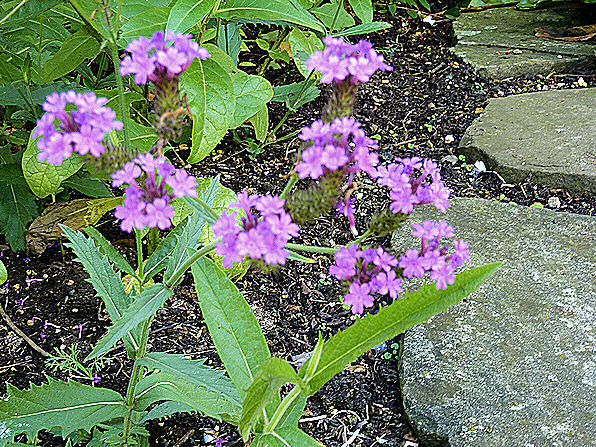 |
| Sandpaper Verbena, Verbena rigida. Plants. All Photos Courtesy Of: Wikipedia, the free encyclopedia. |
|---|
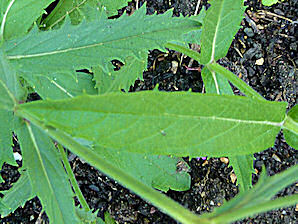 | 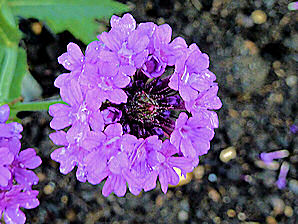 |
| Sandpaper Verbena Leaves. Verbena rigida. | Sandpaper Verbena Flower. Verbena rigida. |
|---|---|
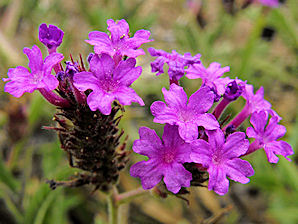 | 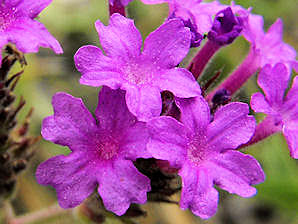 |
| Sandpaper Verbena Flowers. Verbena rigida. | Sandpaper Verbena Flowers. Verbena rigida. |
Sandpaper Verbena. Verbena rigida, Verbena Family: ( Verbenaceae ), Sandpaper Verbena. Also Called: Coarse Verbena, Rough Verbena, Stiff Verbena, Upright Verbena, Tuberous Vervain, Verbena rigida var. lilacina, Verbena rigida var. rigida, Verbena venosa. We wish to thank Wikipedia, the free encyclopedia for some of the information on this page. We share images and information with Wikipedia. A low upright, evergreen, herbaceous, ground cover. It flowers from summer to fall, and is very attractive to butterflies. It is very tolerant of heat and drought making it a good choice for a sunny, hot perennial border. This verbena is a freely branching perennial with opposite lance-shaped leaves which are very rough to the touch. The leaves are two to four inches long and one-half to one and a half inches wide. They are sessile and have a coarsely-toothed margin. It develops underground stems (rhizomes). The flower clusters are stiffly erect spikes, each two to three inches long and three-fourths inch across. The small individual flower has a slender tube and five petals.
Quick Notes:
Height: About 12 inches high, with a spread of 2 - 4 feet.
Flowers: The flower clusters are stiffly erect spikes, each 2 to 3 inches long and 3/4 inch across. The small individual bluish purple tubular flowers have a slender tube and five purple petals.
Fruits: The fruits have four segments which break apart into nutlets.
Blooming Time: February - November.
Stalk: Several erect, sparsely leaved stems with pinkish-lavender, bilaterally symmetrical flowers in a long, open, interrupted cluster.
Leaves: Leaves are opposite lance-shaped leaves which are very rough to the touch. The leaves are 2 to 4 inches long and 1/2 to 1 1/2 inches wide. They are sessile and have a coarsely-toothed margin.
Found: Native of South America in Argentina, Paraguay, Brazil. The USDA claims it is native to the USA (AL, AR, CA, FL, GA, HI, LA, MS, NC, ND, OK, SC, TN, TX, VA), USA+ (PR).
Elevation: 0 - 5,500 feet. Naturally at 800 - 3,500 Feet. Does well at lower elevations but needs water.
Hardiness: We have read reports that it survives at Prescott, Az (Zone 6a).
Soil pH requirements:
Sun Exposure:
Habitat: Loves sun and dry, almost arid conditions. Do not overwater,, Well-drained/light soils. An ideal xeriscape garden landscape plant in Arizona. In many areas it is considered a weed of untended areas such as roadsides, wastelands and pastures.
Miscellaneous: Drought-tolerant; suitable for xeriscaping.
|
We Are Proud Of Our SafeSurf Rating!
Click On Any Of The Following Links By Amazon.Com
For Books, & Videos About Wildflowers Of Arizona & The Southwest USA. No Obligation!
| © 1966 - Present, Audrey, Eve, & George DeLange |
